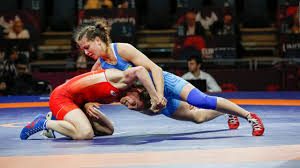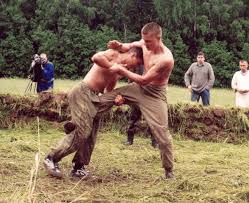CLASSIFICATION OF TYPES OF FIGHT
 All modern types of wrestling, which include freestyle and Greco-Roman, can be divided into two large groups: wrestling in the stance and wrestling in the stance and in the stalls. In different countries (including the territory of the former USSR), various types of national wrestling are common, which are the main part of public holidays, as well as practiced as independent sports disciplines. From each other, these varieties of wrestling, which have basically a lot in common, differ in name, duration of fights and some rules.In general, these rules are similar to international ones. For example, the rules of the Azerbaijan wrestling gülesh are in many respects similar to the rules of free-style wrestling: it allows steps and other impacts on the opponent’s legs, etc. At the same time, various types of wrestling have their own characteristics.
All modern types of wrestling, which include freestyle and Greco-Roman, can be divided into two large groups: wrestling in the stance and wrestling in the stance and in the stalls. In different countries (including the territory of the former USSR), various types of national wrestling are common, which are the main part of public holidays, as well as practiced as independent sports disciplines. From each other, these varieties of wrestling, which have basically a lot in common, differ in name, duration of fights and some rules.In general, these rules are similar to international ones. For example, the rules of the Azerbaijan wrestling gülesh are in many respects similar to the rules of free-style wrestling: it allows steps and other impacts on the opponent’s legs, etc. At the same time, various types of wrestling have their own characteristics.
So, according to the rules of the Hapsagai fight extremely popular in Yakutia, it is necessary to force the opponent to touch the earth with any three points on the body.
Stand fighting
1. without grips below the belt and steps:
– Moldavian trynte dryapte;
– Russian to the cross;
– Tatar kuryash;
– Uzbek (Ferghana version) Kurash;
– Japanese sumo;
2. with footrests without grip below the belt:
– Armenian kokh;
– Kazakh kures;
– Kyrgyz Kuresh;
– Georgian chidaoba;
– Moldavian trynte coupe dike;
– Russian is not in a fight;
– Tajik Gushtingiri;
– Turkmen sorrow;
– Uzbek (Bukhara version) kurash;
– Yakut on belts Kurdatsan-Tustuu;
3. with footrests and grips below the belt:
– English ketch gold;
– Mongolian barilda;
– Tuvinian huresh;
– Swiss (new) syus libra;
– Swiss (old) doorman swigger;
– Yakut hapsagai.
Stand and c
1.without footrests and grips below the belt:
– Greco-Roman (formerly also known as French or classical);
2. with steps and grips below the belt:
– freestyle (according to international rules);
– Azerbaijani güles;
– English (Lancashire) – old free wrestling;
– ancient Egyptian;
– Iranian plague;
– Turkish sunken;
3. with steps, grabs below the waist and painful tricks:
– English free ketch the ketch ken;
– American freestyle professional (wrestling);
– sambo;
– Dutch self-defense;
– Japanese judo and jujitsu.



